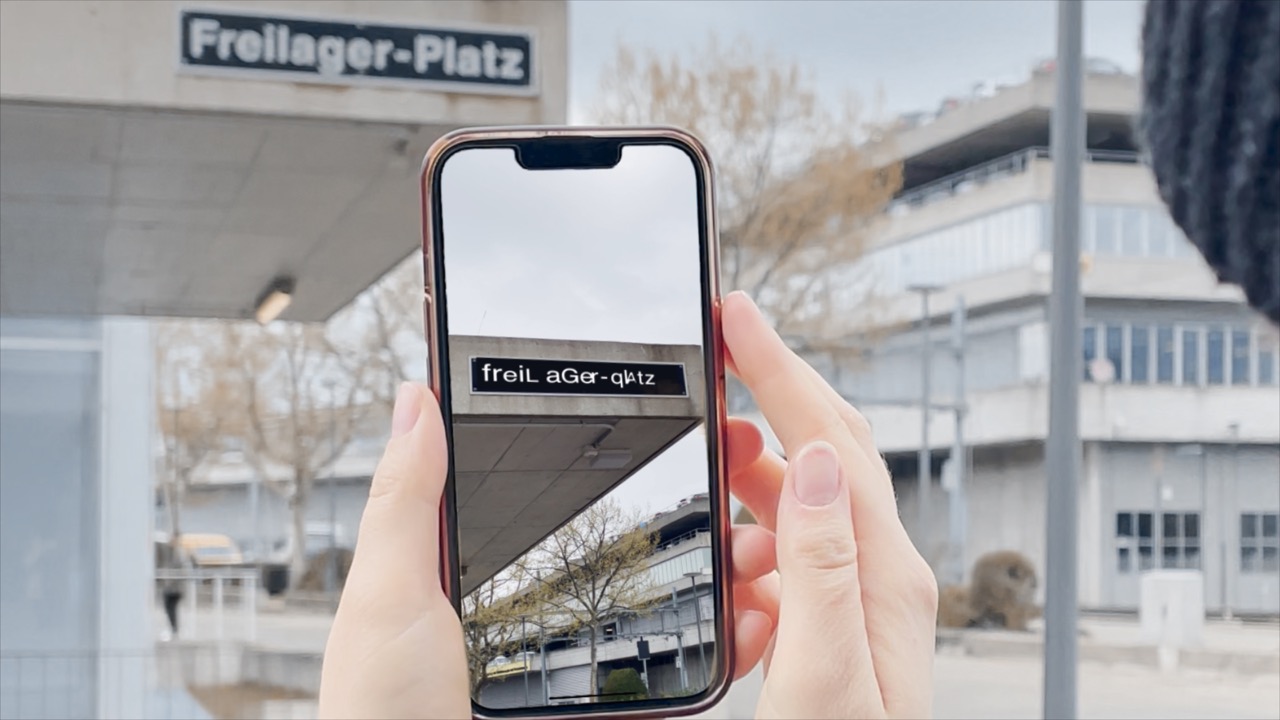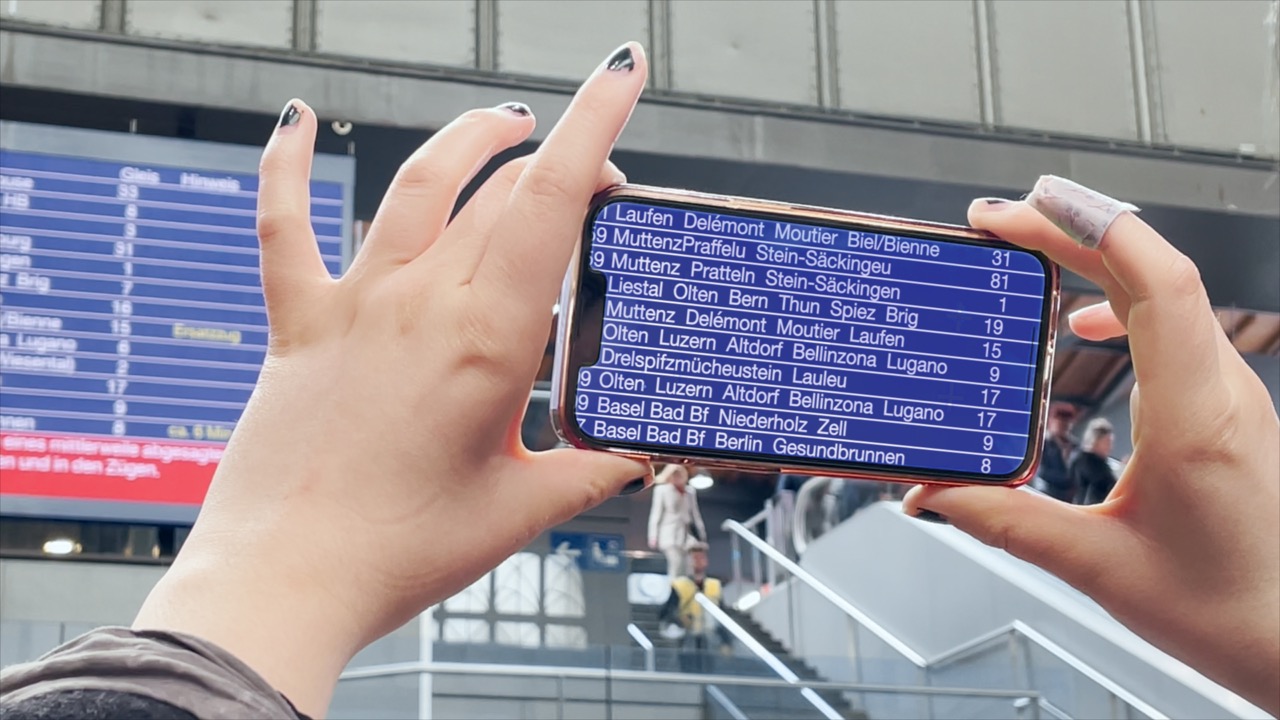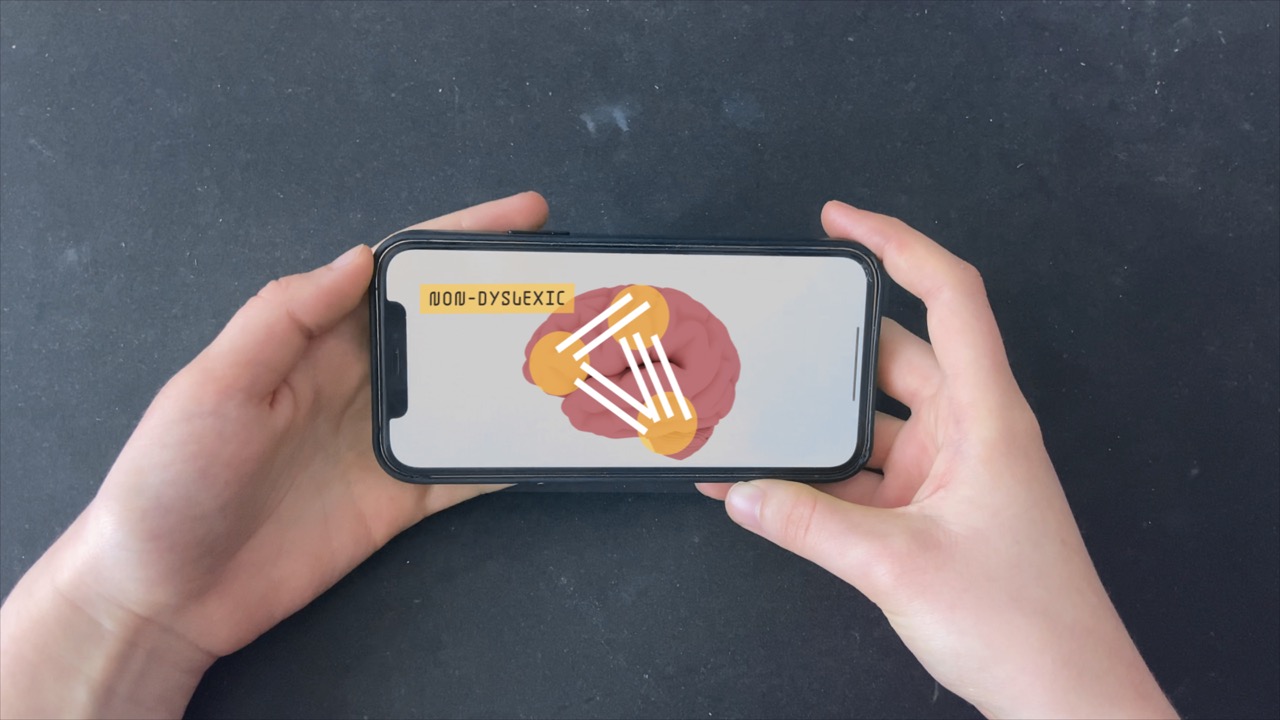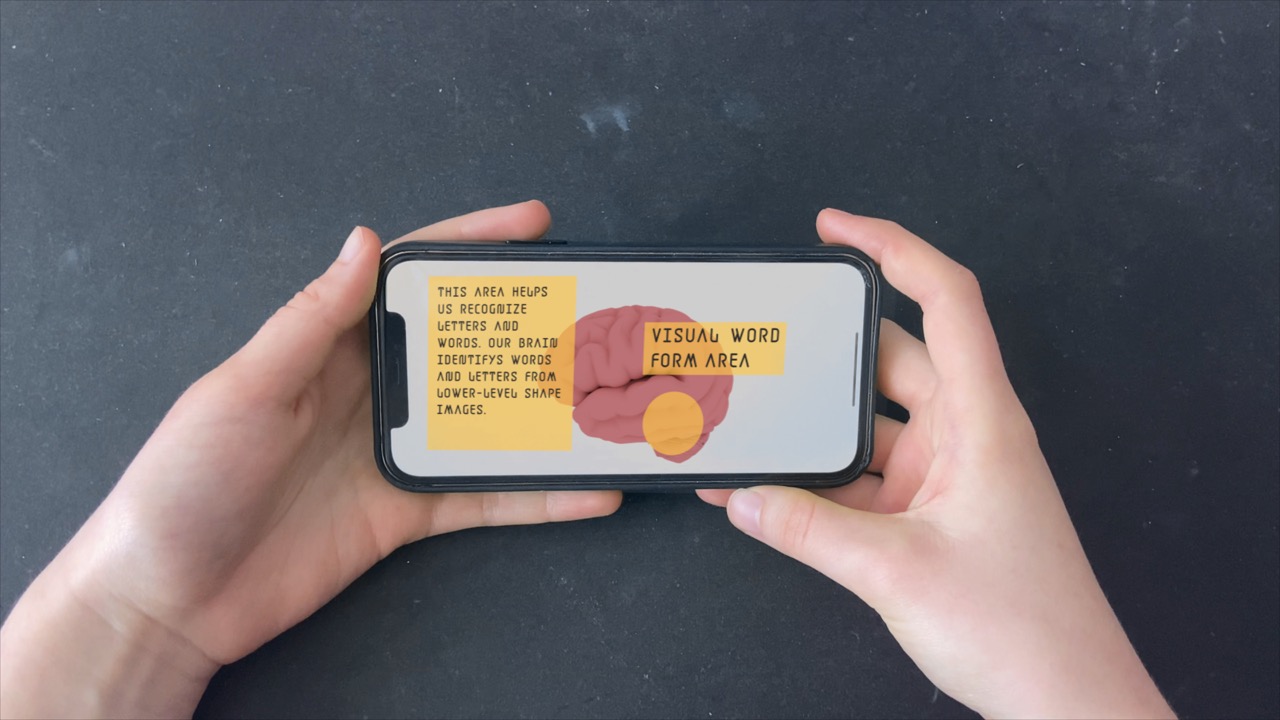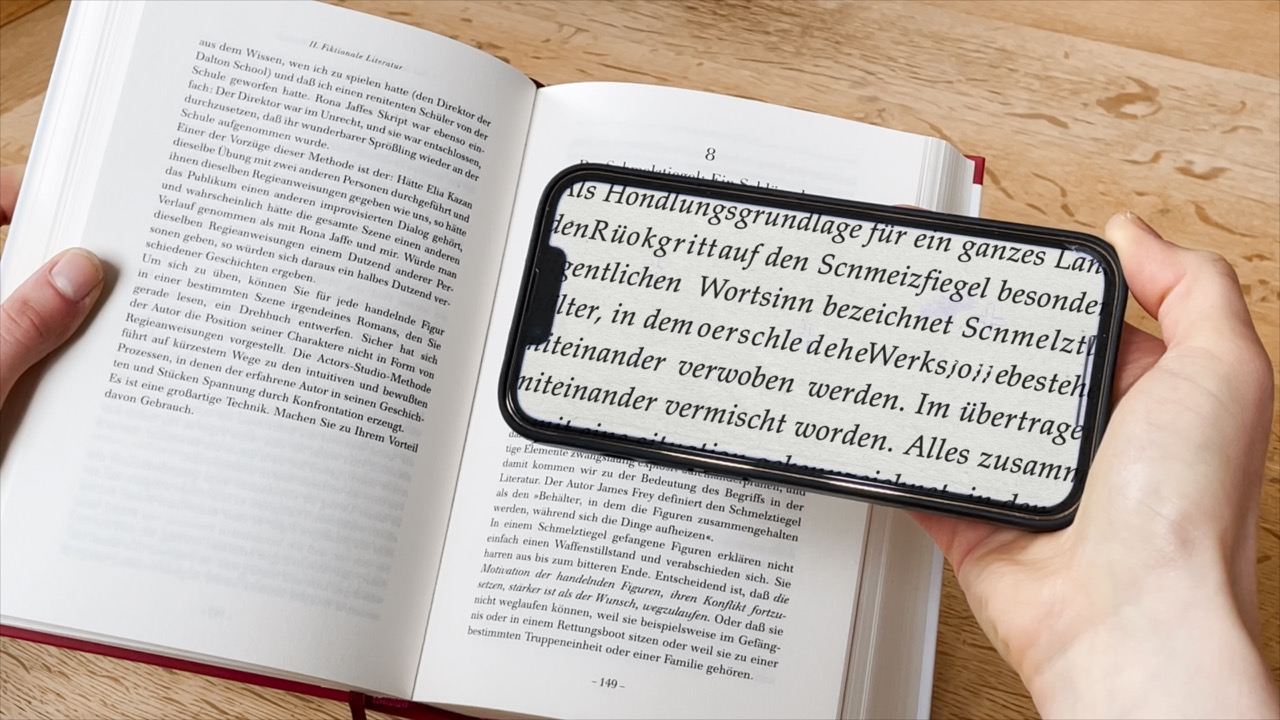Seminar: Cartes Blanches (2021–23)
Dyslexia
Natalie Kohler
Dyslexia is a neurological disorder that affects the ability to learn and use reading and writing. People with dyslexia have great difficulty recognizing, understanding and correctly using letters and words. Dyslexia isn’t related to a person›s intelligence or level of education. The cause lies in language processing in the brain, where a complex process takes place that has not yet been conclusively researched and clarified. However, those affected often have to struggle with prejudice and a lack of understanding.
In this project, a concept for an app was developed that offers a unique insight into the visual perception of dyslexics. The main goal is to visualize to non-affected people how letters and words can look to people with dyslexia and the hurdles they face in everyday life. The app simulates the difficulties by distorting, swapping and mixing words and letters. Users of the app should be able to scan texts and the letters move accordingly. When the app is started, «Info» can be selected in addition to the «scan» mode. Under this heading, information about the neurological process in the brain is explained visually. In addition, the pairs of letters that are most frequently interchanged are illustrated. Throughout the project, I’ve worked closely with an affected person. This ensures that the visualization is as realistic as possible. Since the perception of each person can be individual, the personal view of the person involved is visualized in the app. By means of voiceover, another level of explanation is added, in which the dyslexic person tells about her experiences and difficult situations in life.
In this concept video, the app is used in various everyday situations. For example, at the train station, where the display board is scanned and the place names, tracks and departure times are mixed up. Or also when scanning the IBAN number, WhatsApp messages, street signs or book text. The animations are realized with After Effects and Blender. By morphing, the individual letters merge into each other and a subtle transition between the letter changes becomes possible. The animated screen was then transferred to the mobile phone display using Green Screen and Motion Tracking. It is intended to use the app in an educational context and to raise awareness of dyslexia. The app can help teachers, parents and others to develop a better understanding of the challenges of those affected. The app aims to help break down prejudices and misconceptions by making it clear that dyslexia is not a matter of lack of effort nor intelligence. Currently, the app serves as an awareness-raising tool for non-dyslexics, but it is possible to transform the app into a helpful tool for dyslexics by using the scanning principle for texts. It would be possible for users to freely choose the font, size, colour or spacing, thus generating an improved reading quality and makes everyday life noticeably easier.
